FAMOUS INVENTIONS
Following are the list of the inventions that changed the world. The name of the inventors has been written in bold letters:
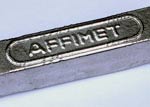 Aluminium. (1880s): Aluminium is one of the most abundant metals. But, it was only in the 1880s that production processes were invented which enabled aluminium to be produced cheaply. Carl Wilhelm Siemens (US) developed a smelter to produce Aluminium from Bauxite ore in 1886. Aluminium is used extensively in building and aeroplane manufacture.
Aluminium. (1880s): Aluminium is one of the most abundant metals. But, it was only in the 1880s that production processes were invented which enabled aluminium to be produced cheaply. Carl Wilhelm Siemens (US) developed a smelter to produce Aluminium from Bauxite ore in 1886. Aluminium is used extensively in building and aeroplane manufacture.
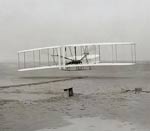 Air plane / aviation (1903) The first powered, heavier than air flight was undertaken by Wright Brothers on December 17, 1903. The first aeroplane was made of wood. By 1909, they made a demonstration of flight around the Hudson River in New York. Aeroplane technology rapidly improved, and they were used for military means in the First World War.
Air plane / aviation (1903) The first powered, heavier than air flight was undertaken by Wright Brothers on December 17, 1903. The first aeroplane was made of wood. By 1909, they made a demonstration of flight around the Hudson River in New York. Aeroplane technology rapidly improved, and they were used for military means in the First World War.
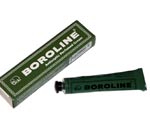 Antiseptics (1850): Dr Semmelweis a Hungarian physician was the first prominent doctor to make a strong link between the use of antiseptics and improving survival rates from women giving birth. His work was taken up by others, such as Joseph Lister who became a pioneer of antiseptic surgery.
Antiseptics (1850): Dr Semmelweis a Hungarian physician was the first prominent doctor to make a strong link between the use of antiseptics and improving survival rates from women giving birth. His work was taken up by others, such as Joseph Lister who became a pioneer of antiseptic surgery.
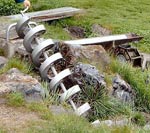 Archimedes Screw (3rd Century BC): Invented byArchimedes of Syracuse, this innovative design enabled water to be pulled uphill against gravity.
Archimedes Screw (3rd Century BC): Invented byArchimedes of Syracuse, this innovative design enabled water to be pulled uphill against gravity.
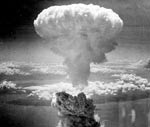 Atomic Bomb (1939-1945): Between this period a team of scientists developed the first atomic bomb as part of the Manhattan project. Chief of the project was Robert Oppenheimer. Albert Einstein’s letter in 1939 warning that the Nazi’s were developing a bomb, were important in creating impetus for the project.
Atomic Bomb (1939-1945): Between this period a team of scientists developed the first atomic bomb as part of the Manhattan project. Chief of the project was Robert Oppenheimer. Albert Einstein’s letter in 1939 warning that the Nazi’s were developing a bomb, were important in creating impetus for the project.
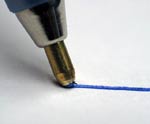 Ball point pen (1938): László Bíró, a Hungarian newspaper editor developed a more suitable ink and ball socket mechanism to prevent ink drying. He filed his first patent in 1938 for a ball point pen in Argentina. After the war, varieties of the ball point pen became commercially successful.
Ball point pen (1938): László Bíró, a Hungarian newspaper editor developed a more suitable ink and ball socket mechanism to prevent ink drying. He filed his first patent in 1938 for a ball point pen in Argentina. After the war, varieties of the ball point pen became commercially successful.
 Barbed wire (1867): The first patent for barbed wire was awarded to Lucien B. Smith. Barbed wire became a very cheap way of creating an effective barrier. Initially used in agriculture to keep animals in certain areas. It became widely used for military purposes.
Barbed wire (1867): The first patent for barbed wire was awarded to Lucien B. Smith. Barbed wire became a very cheap way of creating an effective barrier. Initially used in agriculture to keep animals in certain areas. It became widely used for military purposes.
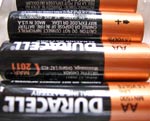 Battery (1800) Voltaic Pile: Alessandro Volta an Italian physicist developed the first battery which gave a steady current using alternative layers of copper and zinc. Lew Urry developed the small alkaline battery in 1949.
Battery (1800) Voltaic Pile: Alessandro Volta an Italian physicist developed the first battery which gave a steady current using alternative layers of copper and zinc. Lew Urry developed the small alkaline battery in 1949.
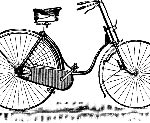 Bicycle (1839): Kirkpatrick MacMillan, a Scottish blacksmith his said to have developed the first two wheeled pedal powered bicycle. In the 1860s, the Michaux or ‘boneshaker’ improved on this design and started in a boom in bicycle use.
Bicycle (1839): Kirkpatrick MacMillan, a Scottish blacksmith his said to have developed the first two wheeled pedal powered bicycle. In the 1860s, the Michaux or ‘boneshaker’ improved on this design and started in a boom in bicycle use.
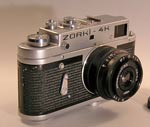 Camera (1839): Louis Daguerre a French innovator spent many years developing the process of photography. In 1839, he made the first camera which enable a permanent photograph to be taken. In 1889, George Eastman invented the flexible role of film which enabled photography to be much more practical.
Camera (1839): Louis Daguerre a French innovator spent many years developing the process of photography. In 1839, he made the first camera which enable a permanent photograph to be taken. In 1889, George Eastman invented the flexible role of film which enabled photography to be much more practical.
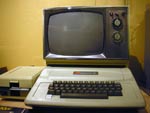 Computer (1940-45) Charles Babbage was considered the father of computers for his work on mechanical computation devices. But, it was only in the 1940s that the first electronic computers were produced. For example, Howard Aiken & Grace Hopper developed the Harvard Mark I computer in 1944.
Computer (1940-45) Charles Babbage was considered the father of computers for his work on mechanical computation devices. But, it was only in the 1940s that the first electronic computers were produced. For example, Howard Aiken & Grace Hopper developed the Harvard Mark I computer in 1944.
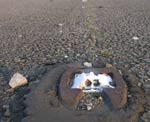
Cat eyes (1934) Developed by Percy Shaw of Halifax, England. Shaw’s design using a reflective lens embedded in the road enabled motorists to have better visibility when driving during the night.
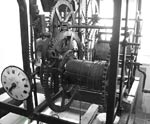
Clocks (1656) Christian Huygens developed the pendulum which made primitive clocks more accurate.
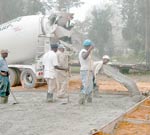 Concrete (1824) English inventor, Joseph Aspdin developed hydraulic cement, which used a mix of limestone, clay and aggregate.
Concrete (1824) English inventor, Joseph Aspdin developed hydraulic cement, which used a mix of limestone, clay and aggregate.
 Electricity (1832) Michael Faraday (England) and Joseph Henry (US) both built models of electricity generators. Nikola Tesla developed the first AC electricity generator in 1892.
Electricity (1832) Michael Faraday (England) and Joseph Henry (US) both built models of electricity generators. Nikola Tesla developed the first AC electricity generator in 1892.










